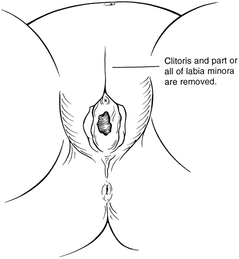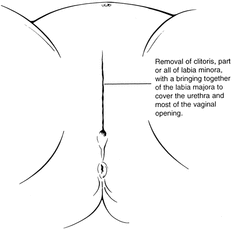Female Genital Mutilation - FGM - is a human rights violation. Practiced in many countries around the world, there are several reasons given for the prevalence of FGM - please click on the WHO button above to learn about FGM. Communities where FGM is practiced believe that girls and young women must continue to uphold tradition. Usually FGM is a taboo topic of discussion. SWF works hard to break the silence on FGM here in the US and around the world

Unaltered Female Genitalia
All natural parts of the female genitalia are depicted in this image.
Cultures where FGM/FGC or female circumcision continues to be practiced consider the clitoris to be unclean and unattractive.
Social pressure unfounded in religious texts is the driving force fueling the prevalence of FGM today.
All natural parts of the female genitalia are depicted in this image.
Cultures where FGM/FGC or female circumcision continues to be practiced consider the clitoris to be unclean and unattractive.
Social pressure unfounded in religious texts is the driving force fueling the prevalence of FGM today.

Type I FGM
- Clitoridectomy: partial or total removal of the clitoris (a small, sensitive and erectile part of the female genitals) and, in very rare cases, only the prepuce (the fold of skin surrounding the clitoris).

Type II FGM - most commonly practiced in Sierra Leone
- Excision: partial or total removal of the clitoris and the labia minora, with or without excision of the labia majora (the labia are "the lips" that surround the vagina).

Type III FGM - also known as Infibulation
- Infibulation: narrowing of the vaginal opening through the creation of a covering seal. The seal is formed by cutting and repositioning the inner, or outer, labia, with or without removal of the clitoris.
- Type IV FGM: all other harmful procedures to the female genitalia for non-medical purposes, e.g. pricking, piercing, incising, scraping and cauterizing the genital area.
FGM is also known globally as Circumcision or FGC - Female Genital Cutting. However, women in Sierra Leone refer to the practice as FGM, placing less importance on the terminology used and more focus on the relevance it holds in their community life.
More than 200 million girls and women worldwide are currently living with FGM consequences
In Africa, over three million girls and women are at risk of FGM annually.
The procedure has no proven health benefits for girls and women.
Procedures can cause severe bleeding and problems urinating, potential childbirth complications and newborn deaths. Women have died during the cutting, or shortly following the procedure.
FGM is mostly carried out on young girls sometime between infancy and age 15
FGM is internationally recognized as a violation of the human rights of girls and women since 1984
Ritual is performed without anesthetics using razor blades, broken glass, scissors, knifes or a sharp stone
Cutting is traditionally carried out by elderly women who are highly respected for their expertise in excision and who receive large sums of money from each girl's family.
Medicalization of FGM has become common among affluent families in many practicing countries, but not in Sierra Leone. FGM is performed during initiation in the secret society.
In Sierra Leone FGM is performed on girls gathered together as a group, part of the initiation ritual into Bondo, the powerful female Secret Society, as a rite of passage into adulthood.
FGM is an effective method used to control women's sexuality.
FGM kills and when it does not, it enslaves women's bodies and minds.
SWF International is commited to ending FGM through non-violent approaches that promote human rights.
